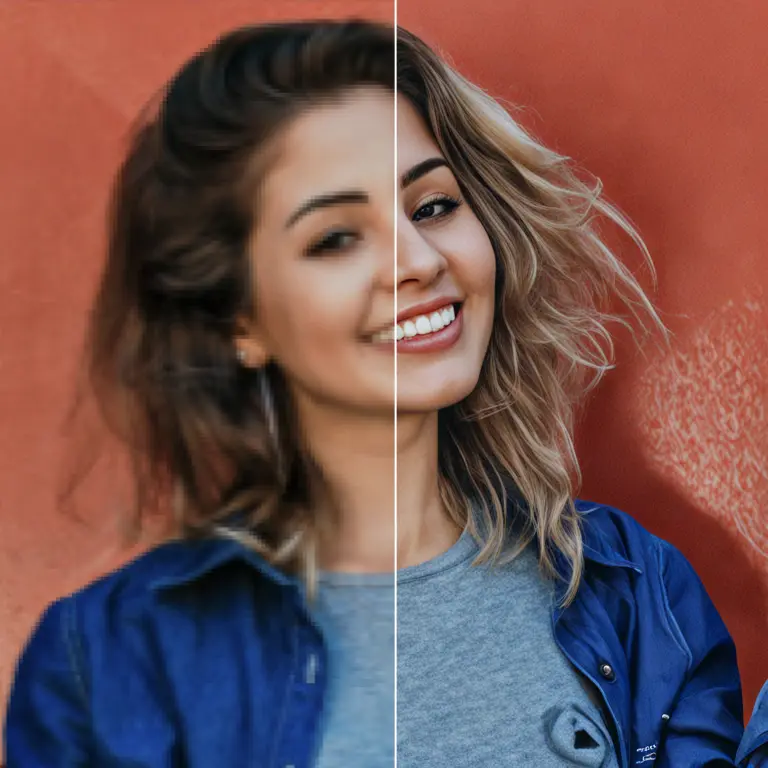ComfyUI Node: Control Image Preprocessor
ControlImagePreprocessor
CategoryNone
huanngzh (Account age: 1561days) Extension
ComfyUI-MVAdapter Latest Updated
2025-04-03 Github Stars
0.38K
How to Install ComfyUI-MVAdapter
Install this extension via the ComfyUI Manager by searching for ComfyUI-MVAdapter- 1. Click the Manager button in the main menu
- 2. Select Custom Nodes Manager button
- 3. Enter ComfyUI-MVAdapter in the search bar
Visit ComfyUI Online for ready-to-use ComfyUI environment
- Free trial available
- 16GB VRAM to 80GB VRAM GPU machines
- 400+ preloaded models/nodes
- Freedom to upload custom models/nodes
- 200+ ready-to-run workflows
- 100% private workspace with up to 200GB storage
- Dedicated Support
Control Image Preprocessor Description
Specialized node for processing multiple images from various perspectives into a single tensor for further analysis.
Control Image Preprocessor:
The ControlImagePreprocessor is a specialized node designed to handle and process multiple image inputs from different perspectives, such as front, back, and side views. Its primary function is to concatenate these images into a single tensor, resize them to specified dimensions, and convert them into a format suitable for further processing or analysis. This node is particularly beneficial for applications requiring a comprehensive view of an object or scene from multiple angles, such as in 3D modeling or virtual reality environments. By efficiently managing and transforming these images, the ControlImagePreprocessor ensures that they are uniformly prepared for subsequent stages in a workflow, enhancing the consistency and quality of the output.
Control Image Preprocessor Input Parameters:
front_view
The front_view parameter expects an image input representing the front perspective of the subject. This image is crucial for providing a direct view and is combined with other views to create a comprehensive representation.
front_right_view
The front_right_view parameter requires an image input from the front-right angle. This perspective helps in capturing additional details that might not be visible from the direct front view, contributing to a more complete visual dataset.
right_view
The right_view parameter takes an image input from the right side of the subject. This view is essential for understanding the lateral aspects and is integral to the multi-view processing approach.
back_view
The back_view parameter is for an image input from the rear perspective. This view complements the front and side views, ensuring that the entire subject is covered from all angles.
left_view
The left_view parameter requires an image input from the left side. Similar to the right view, it provides necessary lateral information and is part of the holistic image processing strategy.
front_left_view
The front_left_view parameter expects an image input from the front-left angle. This view, along with the front-right view, helps in capturing the nuances of the subject's front and side features.
width
The width parameter specifies the desired width for resizing the images. It accepts integer values with a default of 768, a minimum of 1, and a maximum of 2048. Adjusting this parameter affects the horizontal resolution of the processed images.
height
The height parameter determines the target height for resizing the images. It also accepts integer values with a default of 768, a minimum of 1, and a maximum of 2048. This parameter influences the vertical resolution of the output images.
Control Image Preprocessor Output Parameters:
IMAGE
The output parameter is a single tensor containing the processed images. This tensor is the result of concatenating, resizing, and converting the input images into a uniform format. It serves as a ready-to-use input for further processing stages, ensuring that all images are aligned in terms of size and color space.
Control Image Preprocessor Usage Tips:
- Ensure that all input images are of similar quality and lighting conditions to maintain consistency in the output.
- Adjust the
widthandheightparameters according to the resolution requirements of your subsequent processing stages to optimize performance. - Use high-resolution images as inputs to preserve detail when resizing, especially if the output dimensions are large.
Control Image Preprocessor Common Errors and Solutions:
"AttributeError: ' Control Image Preprocessor' object has no attribute 'torch_device'"
- Explanation: This error occurs if the
torch_deviceattribute is not properly initialized, possibly due to a missing or incorrectget_torch_device()function. - Solution: Ensure that the
get_torch_device()function is defined and returns a valid device. Check the initialization of theControlImagePreprocessorclass for any issues.
"ValueError: Images must have the same dimensions"
- Explanation: This error arises when input images have different dimensions, preventing successful concatenation.
- Solution: Verify that all input images are preprocessed to have the same dimensions before being passed to the node. Adjust the input images accordingly.
Control Image Preprocessor Related Nodes
RunComfy is the premier ComfyUI platform, offering ComfyUI online environment and services, along with ComfyUI workflows featuring stunning visuals. RunComfy also provides AI Playground, enabling artists to harness the latest AI tools to create incredible art.


